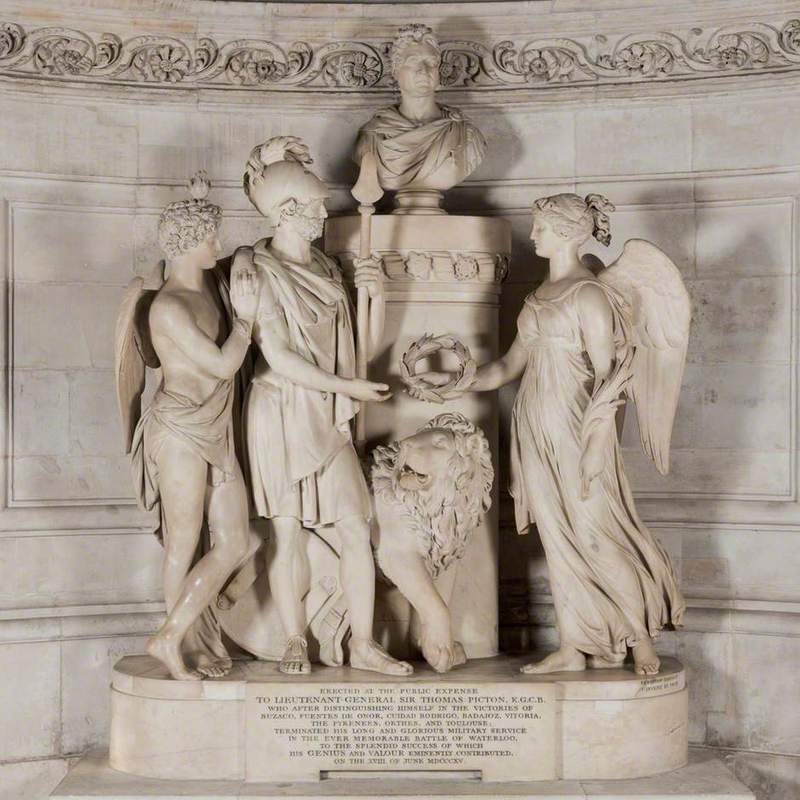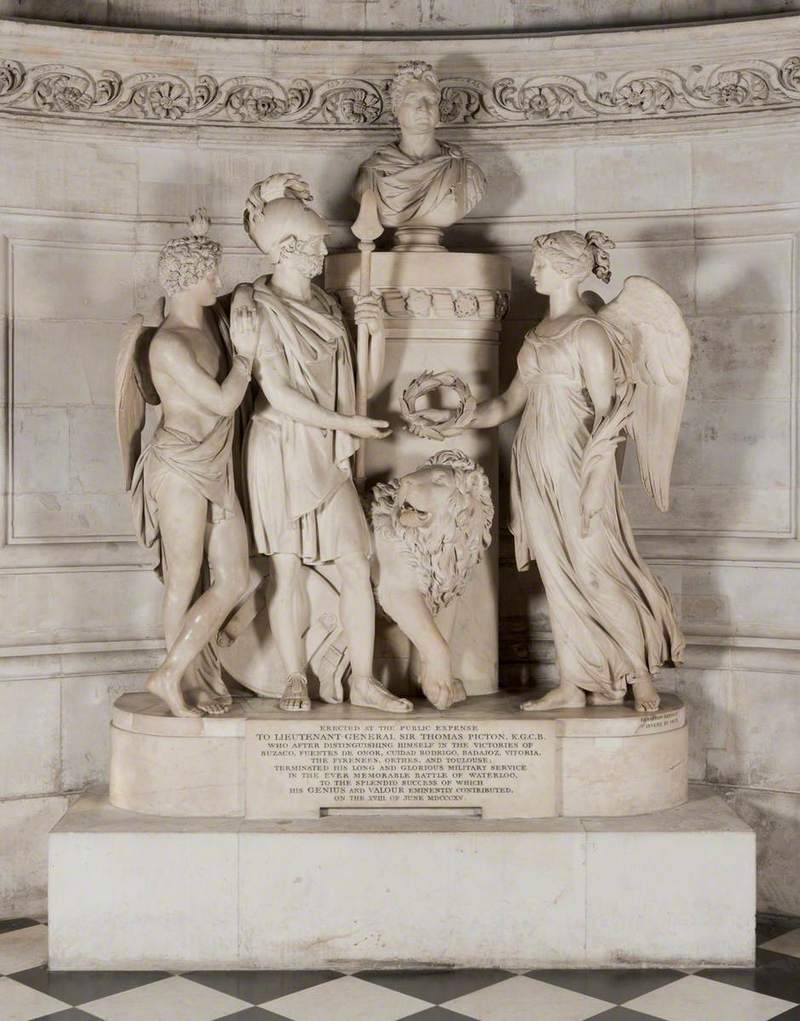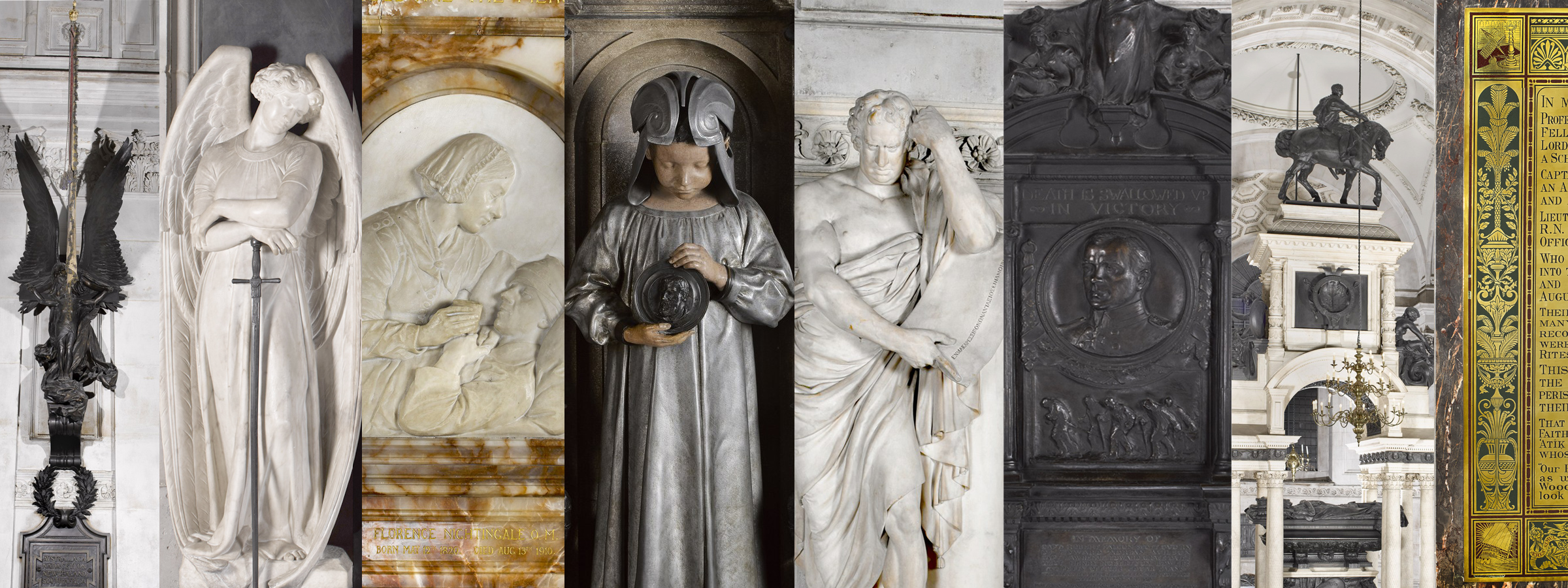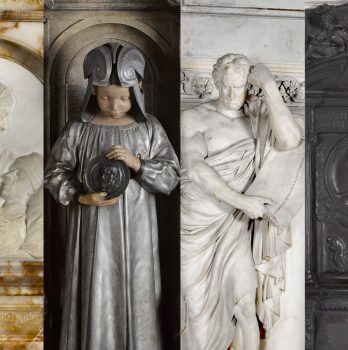Three Poems: Jayda David, Mr Reed and Aicha Thérése of Poetic Unity Respond to the Monument to Thomas Picton (1758–1815) by Sebastien Gahagan, 1816–1821


let them hate, so long as they fear
By Jayda David
we praise the artistry of statues,
clay of the earth turned
a story – without words
yet is it worth the praise at all,
if there’s so much of a history that it forgets to say?
thomas picton, immortalised as a
hero of war and respected for his courage
a man who evaded being punished
for torturing, decapitating and
burning slaves alive
not because he was innocent of these crimes
but because he exploited the fact that the people of these nations had
no rule or law over themselves
and so his crimes were deemed victimless by a justice system that had colonised his victims
the most notable being 13 year old,
Louisa Calderon
who was subjected to torture for about 22 minutes
a particular kind of evil, so unique to Picton that it was named after himself
though that’s a piece of history that is laid to rest of shelves
Picketing or Picton-ing,
tie an arm to the ceiling
tie a foot to an arm
lower the pulley
and watch the victim endure the feeling
of their entire body weight forced onto a wooden spike
he waged his tyranny on enslaved and free people alike
and although he was known as the Tyrant of Trinidad and the Blood-Stained Governor
when they erected his statue along with a plaque, those are names they chose not to write
the objective good a man may do
somehow marks all of his wrongs right
i fear statues may only be a way to
hide dark histories amongst lumps of clay
and carve pretty lines around ugly truths
let them hate so long as they fear
choose what they remember and what they forget
wait for their children’s children’s children to make you regret
ever championing a man in such plain sight
who’s legacy was not built upon preserving life but rather causing unnecessary harm
so if we must have a statue of Sir Thomas Picton
let it be him
arm to the ceiling
foot to an arm
lowered on the pulley
like his victims who endured the feeling
of their entire body weight forced onto a wooden spike
he may not have been brought to justice for his crimes and must forever dwell in that debt
yet it is a courtesy of his victims and our responsibility to choose what we remember and what we forget
By Mr Reed
I once had a friend say to me that this country has a fetish for what they think is bravery
Their history doesn’t exist outside of evil and knavery and they want from everyone the same naivety that they crave from me
Men like Thomas Picton depicted in beautiful masonry, even though his life was a depiction of slavery
In those history lessons where they indoctrinated me, I didn’t realise that “hero” was a word they use aimlessly
So when I talk about this country don’t expect me to speak gracefully, about a place where their heroes are men who had hate for me
In their eyes a critical thinker thinks dangerously so I will speak the truth regardless of what they label me
I guess the worshipping of evil is part of the culture, so if I worship slave masters does it make me a vulture
I could take you around the city, the tour would never end, statues in Trafalgar Square depicting racist men
In St. Paul’s cathedral you can find Thomas Picton’s face, I don’t think Paul would have approved if Paul was a saint
A legacy so horrific you would have thought it was fiction, A monument of a slave master who made children his victims
A hero is someone who is admired for amazing qualities and achievements, In this country there are no boundaries to what they’re achieving
A legacy on this earth that caused nothing but grieving, If Picton is a hero then what are they really teaching?
By Aicha Thèrèse
A villain, is defined as a person who is responsible for crime or damage
A hero is a person who is admired for their courage, achievements, or noble qualities.
How is there such confusion as to which one of these labels applies,
In a history shrouded with lies and a poignant smell of guilt,
A false narrative is written where a monument is built.
For how many decades can we deny and dance through deceit,
Determined to keep devilish details discrete,
Thomas Picton was a man of war, mostly remembered for being the highest ranking official to die at Waterloo,
Mostly forgotten, for his governorship in Trinidad.
Any man given the same power as God, the power of life and death,
Will eventually succumb to it, and abuse its strength.
When wealth is weighed up to worth, there is always space for greed
In 10 years, over 18 thousand souls were brought in by the British to build what we know today as Great.
Sugar cane exports doubling profits.
Alike many plantation owners, Picton was cruel and brutal in his regime,
Africans were imprisoned, stripped of traditions, and punished when practising spirituality.
In 1801 twisted tales came undone, accusing Picton of torture,
The victim was 14 year old Luisa Calderón suspected of committing a robbery,
With one arm tied to the ceiling of a cell and her body balancing on a singular barefooted toe,
She was imprisoned for 8 months
Wealth weighs more than worth and so after £40,000 is paid by army friends and fellow slave owners a dark history is lost
Reducing Luisa to yet another case of unfulfilled justice.
A ‘war hero’ washes his hands of crimes against man, and the world erases this truth,
Replacing the voices of those who fell under his hand,
With secrets wrapped tightly within a noose
History must be uprooted to uncover its destructive roots,
So at last the true villains in this story will not be up for dispute.

About Poetic Unity
Poetic Unity is a charity based in Brixton (London) that provides support and services for children and young people aged 10 to 30 years old across the UK. Their vision is to give young people a voice and to empower them to reach their highest potential. They use poetry as a tool to support young people’s mental health, education, personal development, physical health, and community cohesion. Poetic Unity works with young people from all backgrounds, with a particular emphasis on supporting young people from Black and Black Mixed backgrounds who are marginalised. Founded in 2015, the charity has engaged with more than 40,000 people to date.
To find out more about Poetic Unity, visit their website and find them on Facebook, Instagram and Twitter.
Three of Poetic Unity’s team members contributed poems to this Voice: Jayda David, Mr Reed and Aicha Thérése.
About Jayda David
Jayda David is a Spoken Word Artist and Facilitator who uses poetry to navigate and dissect her perceptions on social injustice and the human experience as a whole. Working with Brixton-based charity Poetic Unity, Jayda delivers poetry workshops to all ages, usually centred on themes of Mental Health and Black British History. She is also currently curating a mixed media anthology, which aims to celebrate and explore working class life in London.
Visit Jayda’s website and find her on Instagram, Twitter and YouTube.
About Mr Reed
Mr Reed is a Poet/Spoken word artist from South London who won Best Poet at the UK Entertainment Awards 2020 and has gained recognition through releasing his thought-provoking pieces on social media platforms. His critically acclaimed piece ‘Story Of A Trash Boy‘ explores emotional manipulation and narcissism in relationships. Speaking on what poetry means to him, he commented, ‘I like to speak my mind, but I sometimes feel like an outcast. I find much more satisfaction is expressing myself through poetry rather than through conversations. As young black men, we often need a creative form of release because we are divine kings living in a western world that doesn’t appreciate us for who we are, so poetry is therapeutic for a lot of us. The spoken word scene has so much potential and I want to be one of the pioneers to take the scene to a level it’s never been to before.’
Find Mr Reed on Instagram, Twitter and YouTube.
About Aicha Thèrèse
Aicha Thèrèse is a powerful spoken word artist, hailing from South East London. She encapsulates real life experiences into a raw and transparent spoken word style, creating mix-media work with physical art and literature. Aicha is also the founder of the poetry and music platform ATL’s Word on the Street a monthly event showcasing live talent.
Find Aicha on Instagram and Twitter.
About the Monument
The monument to Lieutenant General Sir Thomas Picton (1758–1815) was sculpted by Sebastien Gahagan (1779–1838). Picton was the highest ranking British officer to die at the Battle of Waterloo and the monument focused on Picton’s military prowess both in the Peninsular War and at Waterloo. It includes a portrait bust on a pedestal surrounded by the allegorical figures of Genius, identifiable by the flame on his head; Valour (Mars, the Roman God of War); and winged Victory. The tableau is completed by Mars’s lion companion.
The monument makes no allusion to Picton’s role as Governor of Trinidad, a post he held from 1797 to 1803. The brutality of his tenure became notorious – more so following his trial in 1806 on a charge of inflicting torture on Luisa Calderón, a fourteen-year-old mixed race girl accused of stealing. The form of torture used, called ‘picketing’, had been a regularly adopted form of military punishment in the 16th and 17th centuries. It involved the victim being suspended by a rope over a wooden tent, or ‘picket’, peg, which they had to balance on with one foot at a time. Picketing had fallen out of use and was generally unknown when Picton ordered it to be used, so its subsequent association with the case meant that it also became known as ‘pictoning’. Picton was found guilty, though never sentenced, and the verdict was overturned on appeal two years later, on the basis that torture was legal under Spanish law, which was still in force in Trinidad at the time.
Despite Picton’s victory in the courtroom, his reputation was seriously tarnished and was only redeemed in contemporary eyes by his death at Waterloo. As well as his monument on the cathedral floor, his body was re-interred from its original resting place in the family vault at St George’s, Hanover Square, in the crypt of St Paul’s, near the tomb of the Duke of Wellington.


